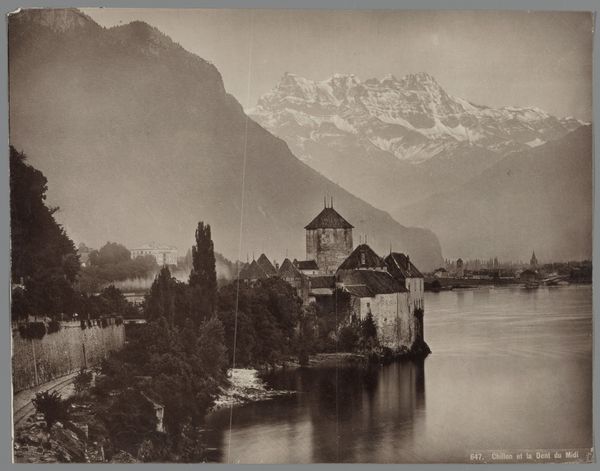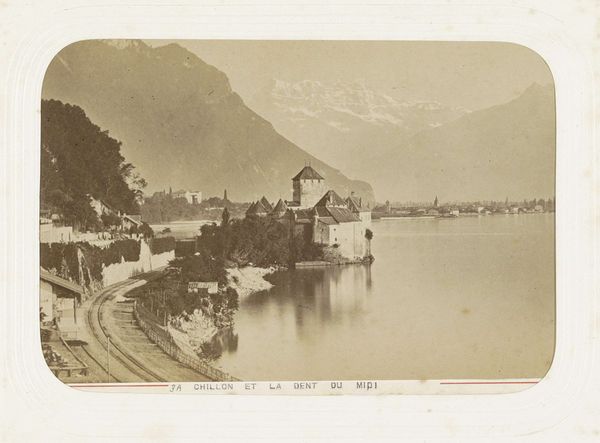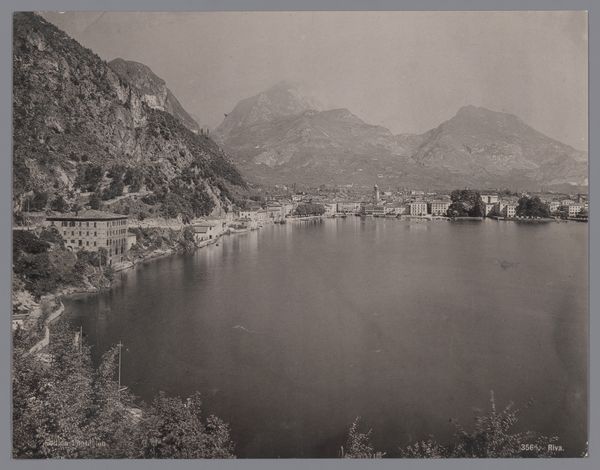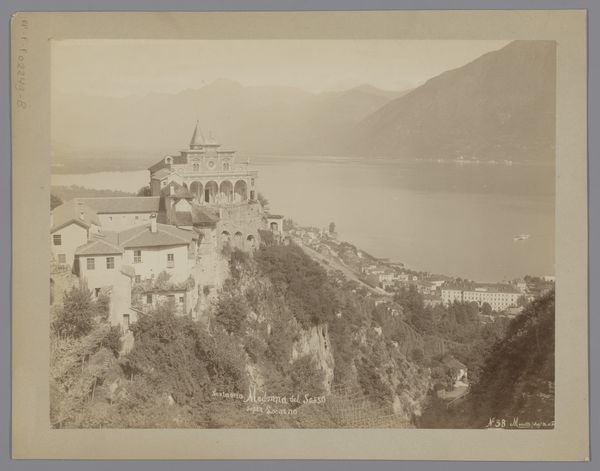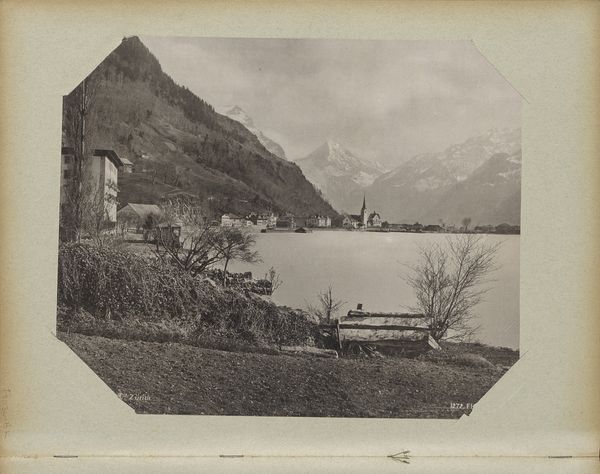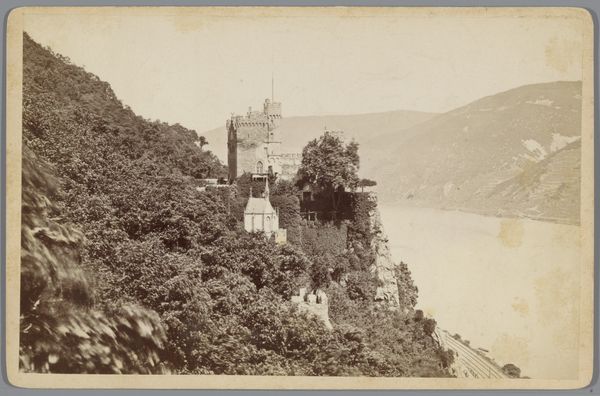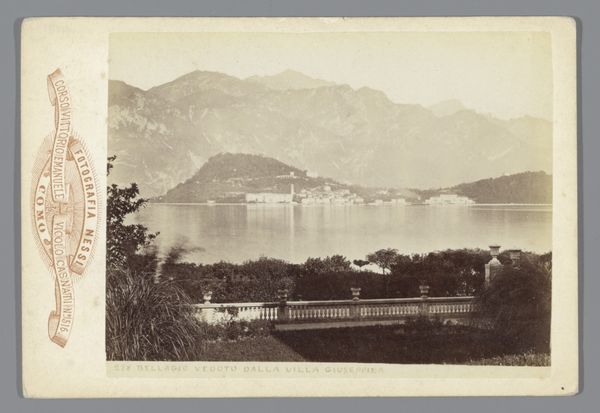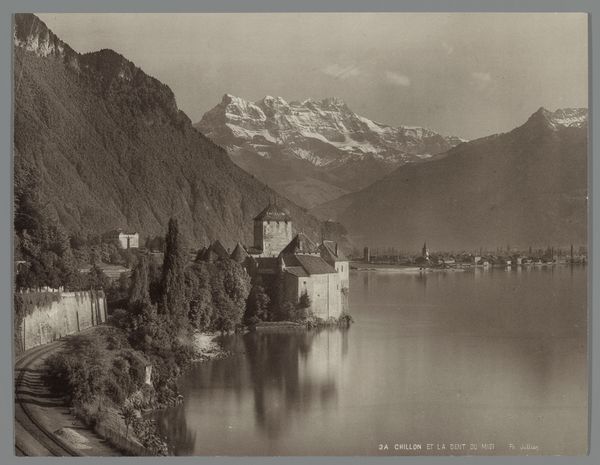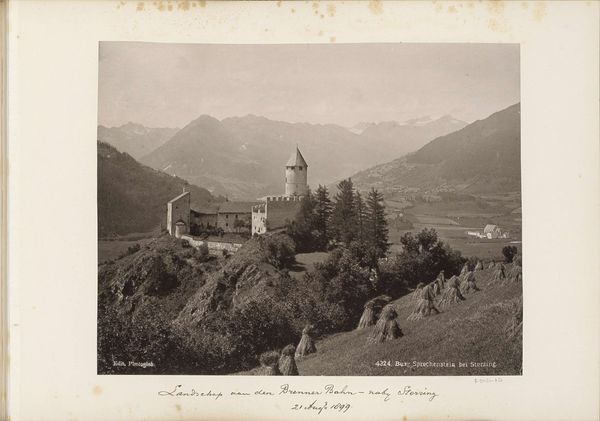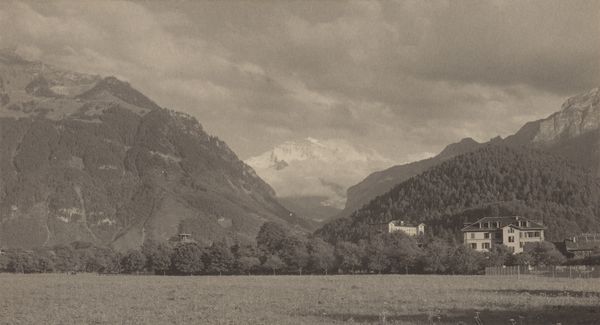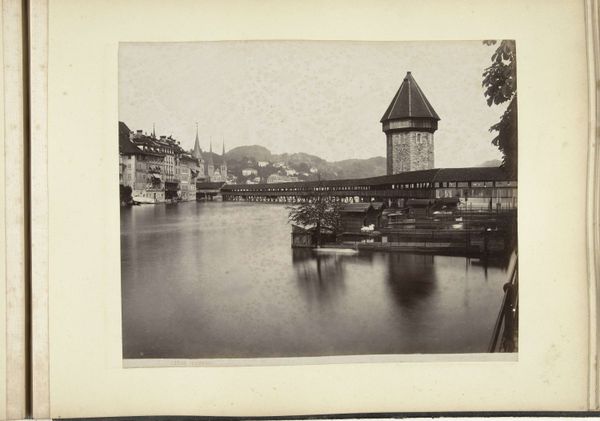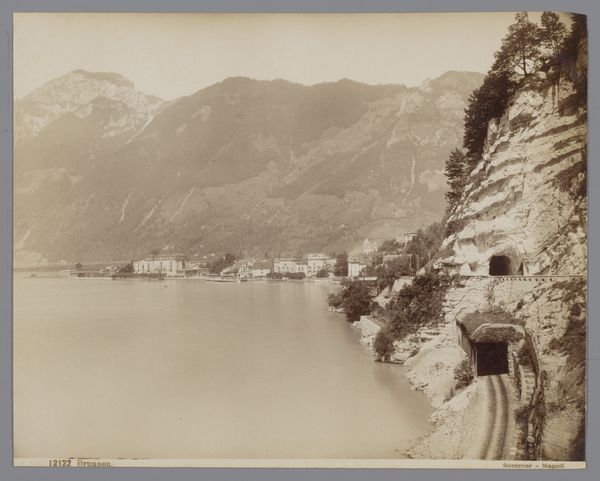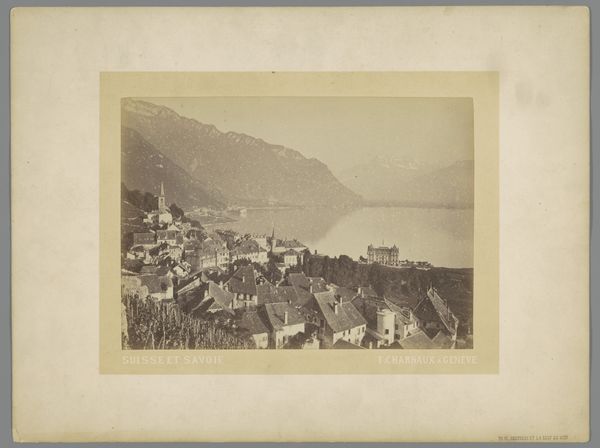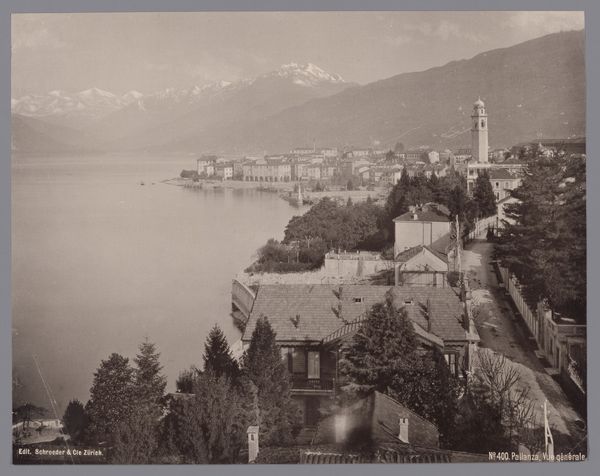
Copyright: Public Domain
Editor: Here we have "The Castle of Chillon," a gelatin silver print from 1855 by John Joscelyn Coghill. It has a somewhat hazy quality. What do you see in this composition, beyond the obvious castle reflected in the lake? Curator: Initially, the photograph strikes one with its almost geometric division of space. Note the horizontal layering – the water, the castle, and then the mountain range receding into the sky. Coghill uses tonal gradation meticulously; light becomes darker from right to left, building a diagonal gradient through dark and light values. Consider this photograph's visual texture in relation to Romantic landscape paintings. Do you perceive any connections? Editor: Yes, it’s subdued, but romantic. The castle isn’t sharply defined; the soft focus almost mythologizes the architecture. But how would you assess this composition today, knowing photography is more technically sophisticated? Curator: Technical precision, while a virtue, should not eclipse the aesthetic purpose. Notice the placement of the castle on the picture plane. By situating the structure just right of center, Coghill forces our eye into and then through the photograph. The weight of the dark hillside against the light reflection serves to activate compositional tension across the frame. The mountains behind the castle diminish scale; but what does that create emotionally for the viewer, can you argue? Editor: I guess a feeling of human smallness in the face of nature, maybe? The mountains overwhelm the architecture, however strong its appearance might be at first. Thank you! Curator: Indeed! The composition facilitates not just observation but subjective reflection and introspection. Thinking through compositional elements provides deeper appreciation.
Comments
No comments
Be the first to comment and join the conversation on the ultimate creative platform.
